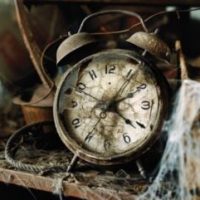I launched a debut novel and bought three to five books at every store where I read on tour, so I struggle to even start to encapsulate this year in reading. And year-end lists tend to cycle around the same famous books again and again, so I’ll try not to repeat too much of what everyone else is crowing about. I read and loved many of those books but you don’t need me to tell you about them.
1. Dept. of Extreme Rereading
OK, that said, I have to shout out Alexander Chee’s essay “The Guardians,” in I read it, I reread it, I handed it to people I love with you have to read this, they handed it off to other people with the same, it transformed us all.
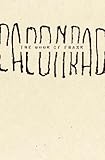
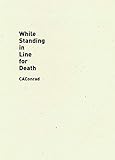 My other vital reread is the poem “Glitter in My Wounds” by CAConrad: “glitter on a queer is not to dazzle but to / unsettle the foundation of this murderous culture.” I read this in the November issue of Poetry, sitting at a tiny table in a big corporate bookstore while I waited for my dog to be finished at the vet across the street. I read “Glitter in My Wounds” so many times I think I’ve inadvertently committed it to heart. And it led me directly to Conrad’s collections The Book of Frank (2011) and While Standing in Line for Death (2017), half of which I accidentally read sitting on the living room floor between my dogs. I casually started reading and then couldn’t stop gorging myself on Conrad’s feral queer genius. (“You Don’t Have What It Takes to Be My Nemesis”: writer battle cry.)
My other vital reread is the poem “Glitter in My Wounds” by CAConrad: “glitter on a queer is not to dazzle but to / unsettle the foundation of this murderous culture.” I read this in the November issue of Poetry, sitting at a tiny table in a big corporate bookstore while I waited for my dog to be finished at the vet across the street. I read “Glitter in My Wounds” so many times I think I’ve inadvertently committed it to heart. And it led me directly to Conrad’s collections The Book of Frank (2011) and While Standing in Line for Death (2017), half of which I accidentally read sitting on the living room floor between my dogs. I casually started reading and then couldn’t stop gorging myself on Conrad’s feral queer genius. (“You Don’t Have What It Takes to Be My Nemesis”: writer battle cry.)
2. Dept. of Chronology
 The first book I read this year, traveling to snowy northern Minnesota, was Leni Zumas’s Red Clocks—fierce, lyrical, deeply intelligent both linguistically and emotionally, and the most honest and complicated book about reproduction I’ve ever read. The ending both wrecked me and restored me. The last book I read this year—as in I am reading it right now here in snowy northern Arizona—is The Mushroom at the End of the World by Anna Lowenhaupt Tsing, and it may be one of the most brain-tinglingly brilliant books I’ve ever read. Tsing takes the rare and undomesticable matsutake mushroom as an entry into the way life regenerates and reassembles in ruined spaces—it’s not just about mushrooms; it’s also about economies, scales, interspecies assemblages, human migration, and, well, as the subtitle says, “On the Possibility of Life in Capitalist Ruins.” I can feel this book reshaping my lens on the world even as I read.
The first book I read this year, traveling to snowy northern Minnesota, was Leni Zumas’s Red Clocks—fierce, lyrical, deeply intelligent both linguistically and emotionally, and the most honest and complicated book about reproduction I’ve ever read. The ending both wrecked me and restored me. The last book I read this year—as in I am reading it right now here in snowy northern Arizona—is The Mushroom at the End of the World by Anna Lowenhaupt Tsing, and it may be one of the most brain-tinglingly brilliant books I’ve ever read. Tsing takes the rare and undomesticable matsutake mushroom as an entry into the way life regenerates and reassembles in ruined spaces—it’s not just about mushrooms; it’s also about economies, scales, interspecies assemblages, human migration, and, well, as the subtitle says, “On the Possibility of Life in Capitalist Ruins.” I can feel this book reshaping my lens on the world even as I read.
3. Dept. of Collections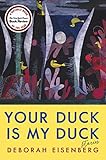 I read Deborah Eisenberg’s Your Duck Is My Duck in bed, sometimes way too late into the morning when I should have been up and working, and sometimes aloud at night to my companion as they fell asleep. Eisenberg is one of my all-time short-fiction heroes and Your Duck Is My Duck is, as usual, school for me. With each story, you’re just, like, submerged into a full-blown consciousness and set loose. Every time I read her I learn from her. Out of all the famous people in the world the only person I have ever felt legit starstruck by is Deborah Eisenberg. At an Iowa anniversary event, I couldn’t even bear to approach her, even while our mutual friend strolled over to chat.
I read Deborah Eisenberg’s Your Duck Is My Duck in bed, sometimes way too late into the morning when I should have been up and working, and sometimes aloud at night to my companion as they fell asleep. Eisenberg is one of my all-time short-fiction heroes and Your Duck Is My Duck is, as usual, school for me. With each story, you’re just, like, submerged into a full-blown consciousness and set loose. Every time I read her I learn from her. Out of all the famous people in the world the only person I have ever felt legit starstruck by is Deborah Eisenberg. At an Iowa anniversary event, I couldn’t even bear to approach her, even while our mutual friend strolled over to chat.
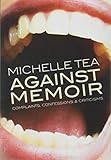 I read Michelle Tea’s essay collection Against Memoir in a couple of quiet early summer afternoons on a friend’s pool house couch in Los Angeles; I was in a blue moment, and this wide-ranging collection took such good companionable care of me. Michelle writes like she talks—quick and insightful and candid, witty and vulnerable and curious and smart. (Describing her tweenaged hopeless love for Prince: “It was impossible. I didn’t cry. I just sort of exuded trapped melancholia into my environment, like a plant.”)
I read Michelle Tea’s essay collection Against Memoir in a couple of quiet early summer afternoons on a friend’s pool house couch in Los Angeles; I was in a blue moment, and this wide-ranging collection took such good companionable care of me. Michelle writes like she talks—quick and insightful and candid, witty and vulnerable and curious and smart. (Describing her tweenaged hopeless love for Prince: “It was impossible. I didn’t cry. I just sort of exuded trapped melancholia into my environment, like a plant.”)
 I read Nafissa Thompson-Spires’s debut Heads of the Colored People all over the place: in galleys in Richmond, Virginia, in hardcover on a friend’s couch in Los Feliz, on audiobook as I wound through the red rock cliffs and cacti on Arizona’s Highway 17. The title story, “Belles Lettres,” and “Fatima, the Biloquist” are so smart, emotionally rich, and necessary they’re going straight to my syllabi.
I read Nafissa Thompson-Spires’s debut Heads of the Colored People all over the place: in galleys in Richmond, Virginia, in hardcover on a friend’s couch in Los Feliz, on audiobook as I wound through the red rock cliffs and cacti on Arizona’s Highway 17. The title story, “Belles Lettres,” and “Fatima, the Biloquist” are so smart, emotionally rich, and necessary they’re going straight to my syllabi.
4. Dept. of Nepotism But Also 100 Percent True Fandom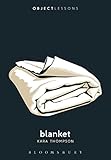 The book I literally read and listened to more than any other this year, from proofs to press, is Blanket by K Thompson. Even if K were not my life companion and dog co-parent, I would be in love with this beautiful, strange, brilliant mediation on blankets, interwoven with brief glimmering shards about the death of a beloved young brother. When a passage can move you to cry as much on the tenth read as on the first, you know you’ve hit gold.
The book I literally read and listened to more than any other this year, from proofs to press, is Blanket by K Thompson. Even if K were not my life companion and dog co-parent, I would be in love with this beautiful, strange, brilliant mediation on blankets, interwoven with brief glimmering shards about the death of a beloved young brother. When a passage can move you to cry as much on the tenth read as on the first, you know you’ve hit gold.
 Abbey Mei Otis knocked me out with her fiction in a workshop I taught years ago at Oberlin, and this summer Small Beer Press published her first collection, Alien Virus Love Disaster. I read it at the coffee shop in the morning when I was supposed to be writing and at home as the August afternoon monsoons rolled in. Taut, freaky, unsettling speculative fiction where actual aliens, viruses, love, and disaster abound. So do great sentences. This book feels like the future. All hail the new writer generation.
Abbey Mei Otis knocked me out with her fiction in a workshop I taught years ago at Oberlin, and this summer Small Beer Press published her first collection, Alien Virus Love Disaster. I read it at the coffee shop in the morning when I was supposed to be writing and at home as the August afternoon monsoons rolled in. Taut, freaky, unsettling speculative fiction where actual aliens, viruses, love, and disaster abound. So do great sentences. This book feels like the future. All hail the new writer generation.
5. Dept. of Actual Scandal
Like many of us who are academia-adjacent, I was completely captivated and repulsed by the Avital Ronell scandal that broke this summer: a story of queer mentorship gone terribly awry, brazen power abuse misrepresented as special “queer coding” when it simply bears all the hallmarks of an unchecked personality disorder, and an evidence chain of weird, cringe-inducing, wildly inappropriate emails. I think I read just about everything there was to read about this, and the two pieces that stuck with me most were a predictably witty, scathing article for the Chronicle of Higher Ed by Andrea Long Chu (“Academic celebrity soaks up blood like a pair of Thinx”) and an unexpectedly witty, scathing LARB post by (to my shock) old-school Marjorie Perloff (“Certainly I will make some new enemies, but that’s a chance this octogenarian is willing to take.”)
6. Dept. Of Local Treasures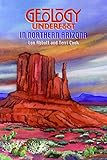
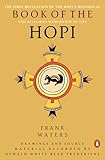
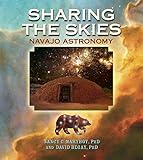
 This summer I moved into a ponderosa pine forest near Flagstaff, Arizona, and fell in love with the place the way you fall in love with a living thing. Flagstaff is a mountain town, a border town, the homelands of several native nations, a volcanic wonderland, a dark-sky city, and home to astonishing biological and geological diversity. Ever since, the book I have picked up more than any other this year—I read it on the couch, I read it in the car, I pull it out on the side of the hiking trail—is Geology Underfoot in Northern Arizona. This information-packed, funny, friendly book has me all hopped up on things like the difference between rhyolite and basalt, why the peaks outside my window are shaped as they are, infant volcanoes, and mining and hydrology crises. The Book of Hopi by Frank Waters and Oswald White Bear Fredericks is a gorgeous gathering of origin stories, Hopi world views, and artwork, as told by 30 Hopi elders. Sharing the Skies: Navajo Astronomy, a book I recently picked up in a bead shop in town, describes the intricate, awe-inspiring astronomy and cosmology of the Navajo; in a place so dark and clear-skied that I can actually see the Milky Way overhead, I’m starting to learn my way around the constellations, and the stories here captivate me far more than the old Greek ones. Finally, two weeks ago I picked up Sherwin Bitsui’s brand-new book Dissolve, a collection of brief, sharp, glimmering pieces that accrue into a single long poem rooted deeply in place. “This plot, now a hotel garden / its fountain gushing forth— / the slashed wrists of the Colorado.”
This summer I moved into a ponderosa pine forest near Flagstaff, Arizona, and fell in love with the place the way you fall in love with a living thing. Flagstaff is a mountain town, a border town, the homelands of several native nations, a volcanic wonderland, a dark-sky city, and home to astonishing biological and geological diversity. Ever since, the book I have picked up more than any other this year—I read it on the couch, I read it in the car, I pull it out on the side of the hiking trail—is Geology Underfoot in Northern Arizona. This information-packed, funny, friendly book has me all hopped up on things like the difference between rhyolite and basalt, why the peaks outside my window are shaped as they are, infant volcanoes, and mining and hydrology crises. The Book of Hopi by Frank Waters and Oswald White Bear Fredericks is a gorgeous gathering of origin stories, Hopi world views, and artwork, as told by 30 Hopi elders. Sharing the Skies: Navajo Astronomy, a book I recently picked up in a bead shop in town, describes the intricate, awe-inspiring astronomy and cosmology of the Navajo; in a place so dark and clear-skied that I can actually see the Milky Way overhead, I’m starting to learn my way around the constellations, and the stories here captivate me far more than the old Greek ones. Finally, two weeks ago I picked up Sherwin Bitsui’s brand-new book Dissolve, a collection of brief, sharp, glimmering pieces that accrue into a single long poem rooted deeply in place. “This plot, now a hotel garden / its fountain gushing forth— / the slashed wrists of the Colorado.”
In 2018 I’ve thought more than ever about the Colorado River. I lived half the year in Los Angeles, the heedless beneficiary of that river’s diversion, a place where people spend that water foolishly like an inheritance they never had to work for, and then I lived half the year here in northern Arizona, where the litigious control of that river has caused relentless ecological and cultural disaster for the people, animals, and plants indigenous to the place. Everything I read this year (both listed here and not) moved me, shaped me, and cracked open new understandings for me, but perhaps nothing has been more influential or important to me than reading books about the place where I now live. When the contemporary world is falling apart, it helps me to turn to geological time and to scientific and indigenous knowledge about the ground beneath my feet and the sky overhead. The more I learn, the more I love it, with awe, with desperation, and with the understanding of how my own settler presence is a threat—yet how in the ruins we can find new and remarkable growth and assemblages. If there’s one thing I’ve learned this year, it’s that the ground beneath your feet holds the stories of everything.
More from A Year in Reading 2018
Do you love Year in Reading and the amazing books and arts content that The Millions produces year round? We are asking readers for support to ensure that The Millions can stay vibrant for years to come. Please click here to learn about several simple ways you can support The Millions now.
Don’t miss: A Year in Reading 2017, 2016, 2015, 2014, 2013, 2012, 2011, 2010, 2009, 2008, 2007, 2006, 2005
The post A Year in Reading: Chelsey Johnson appeared first on The Millions.
Source : A Year in Reading: Chelsey Johnson






